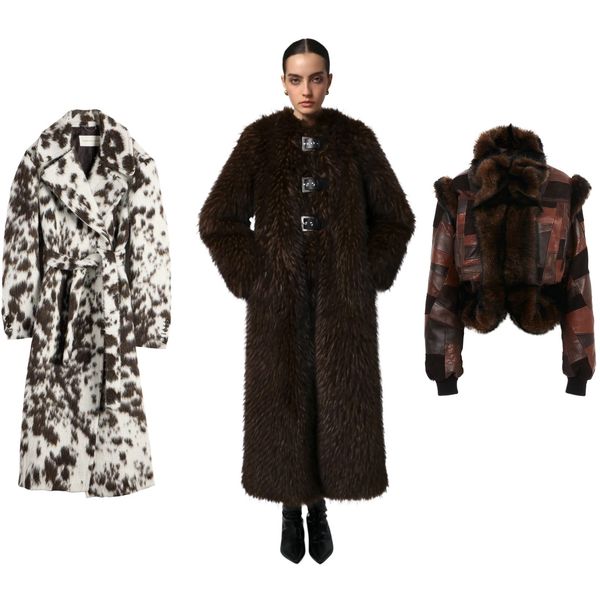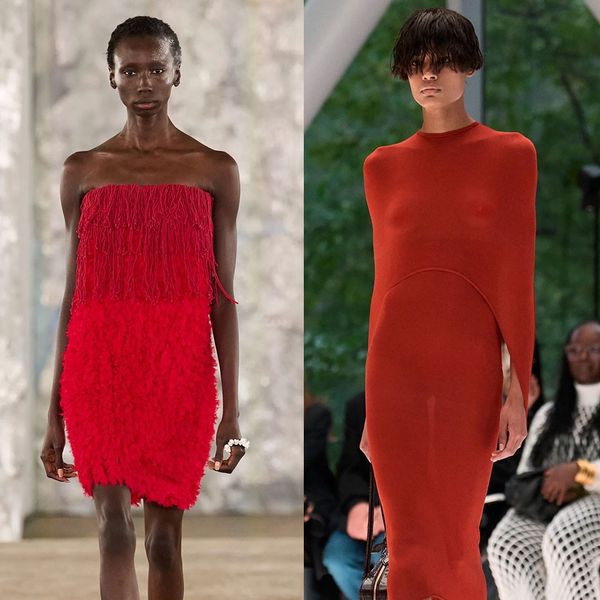Home Is Where The Spa Is
Forget cold and clinical—beauty studios today are designed to feel like an extension of your dream home. And that’s exactly the point.
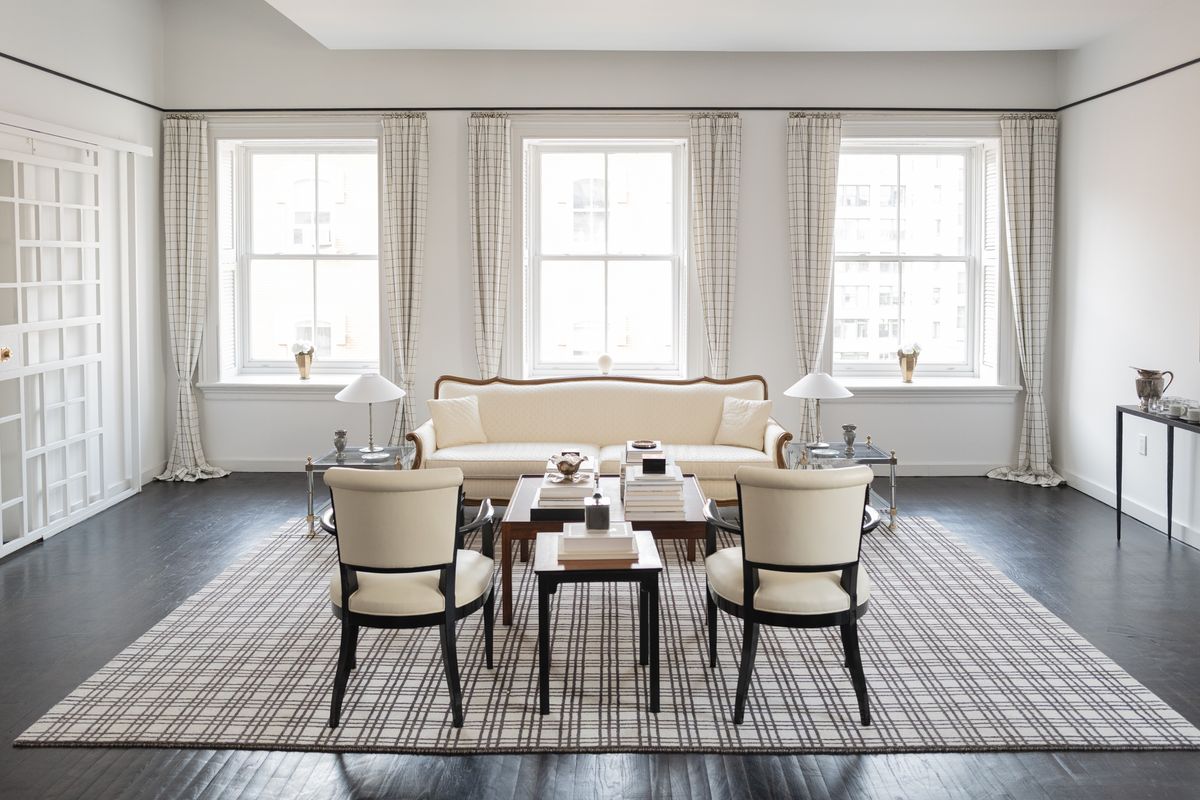
In Eye Diet, Sydney Gore breaks down the buzziest design and decor trends that are a visual feast.
Once Elizabeth Grace Hand secured the 2,000-square-foot commercial space that would become Ställe Studios, she imagined a Swedish dollhouse that mirrored the glowy, glassy skin of her clients. Instead of the cold, sterile energy that most modern medical spas evoke, the New York-based esthetician wanted her facial studio to feel like walking into your most sophisticated friend’s apartment. “It’s an aesthetics business, we’re making people look great, but I want them to feel good, too…The space really goes into that,” she says.
Hand hired the Stockholm-based interior designer Madeleine Asplund Klingstedt to execute her holistic vision of beauty from the inside out. “We already had our [brand] identity and then we were able to build the interiors around that,” she explains. “[When you go to] these places where there’s venture capital or private equity [funding], maybe it’s beautiful, but it’s missing that personal touch and I think that’s a really big part [of it].” There are subtle nods to the Art Deco era, like pretty pewter pieces placed on stacks of coffee table books that cover burl wood surfaces and delicate Murano glass mirrors hanging (or leaning) from the wall. But these ornamental objects aren’t just reserved for looking; Hand wants people to touch and interact with them throughout their appointment.
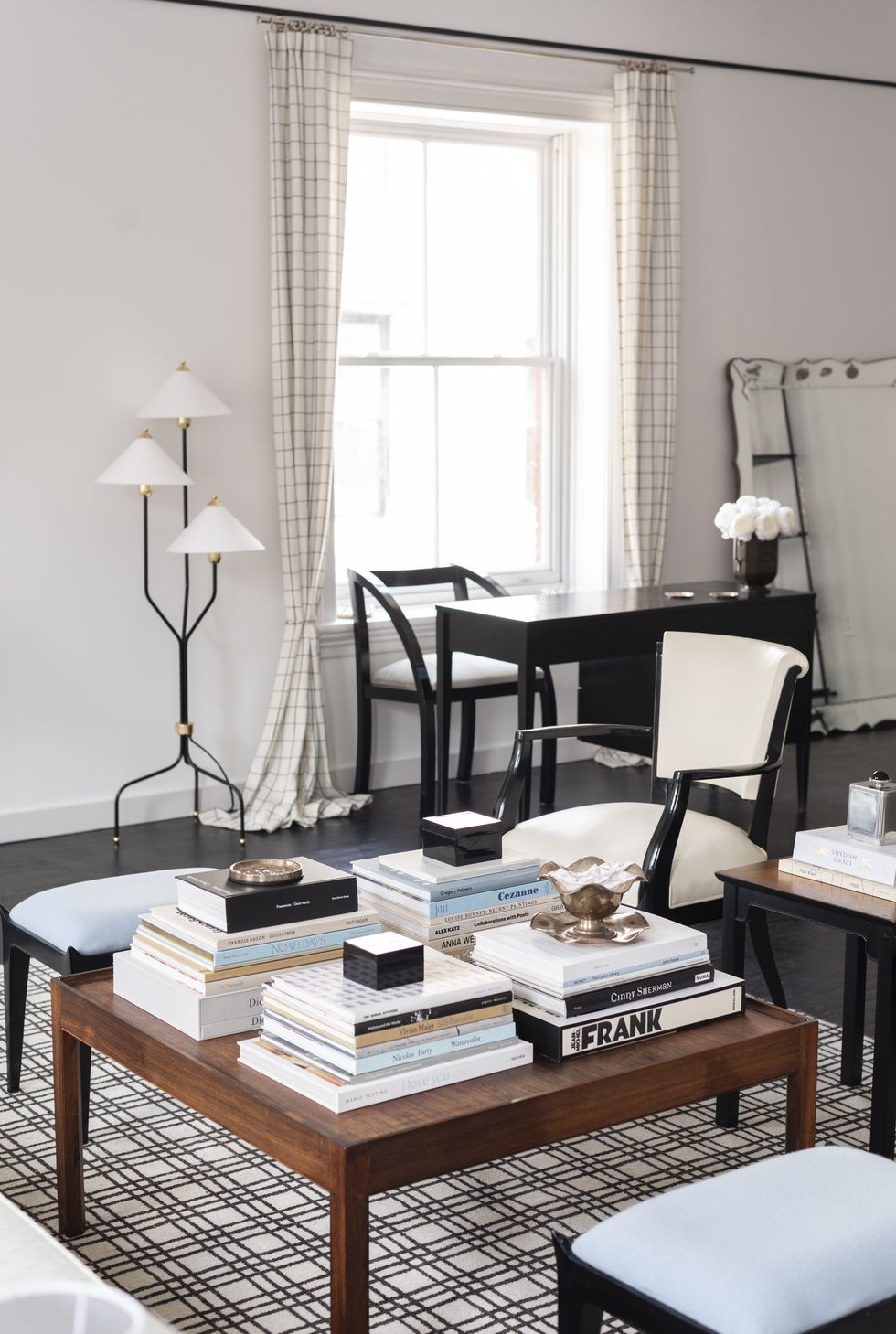
Pictured: A pair of vintage stools from 1stDibs reupholstered in a “Muesli blue” fabric to honor Elizabeth Hand’s cat. / Photo: Clare Perry
So many of these highly curated waiting rooms make you feel like you’re at home, but so much better. It’s like playing house, except this is not a fantasy, it’s a real place where you can sit back and relax for hundreds (or thousands) of dollars. Before I ever stepped foot in SPENCER’S in Soho, I already knew what to expect because I had seen the sitting room all over Instagram. To be completely honest, I was more interested in seeing the Charlotte Taylor-designed space up close than booking an appointment, but now I’m a semi-regular. (The new West Hollywood location that recently opened is a Spanish colonial style house built in 1925.)
Klingstedt attributes the domestication of commercial spaces to brands capitalizing on selling a lifestyle that can be advertised on social media. Now, the best way to do this is through a physical space that literally gets people through the door, even if it’s just to take a mirror selfie for the ‘gram. When Hand briefly mentioned that she wanted to present product recommendations in a beautiful way, Klingstedt’s first thought was “Can we have a silver tray to put them on?” At the time, she hadn’t considered that clients might use it as a prop for their own content. “It’s so rewarding when you see that people want to put their jewelry on the silver tray, hang their coat [on the silk hanger], put their bag on the little chair, and take a photo of it,” Klingstedt says. “I think it’s a really good way of valuing each little moment.”
The Home-ification Of Beauty & Wellness
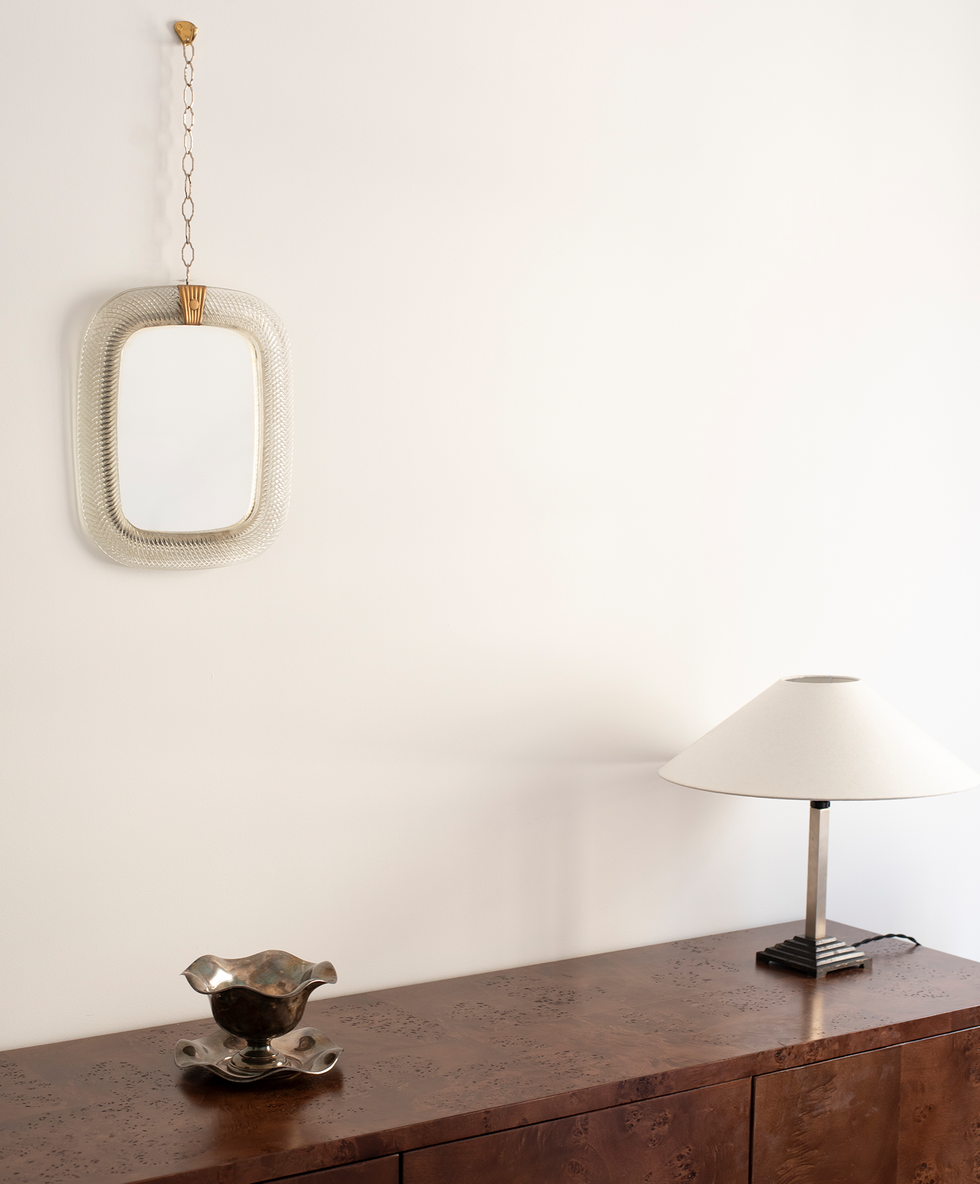
Klingstedt describes Ställe Studios as “Elizabeth personified in the space,” but that’s what makes it feel real." / Photo: Clare Perry
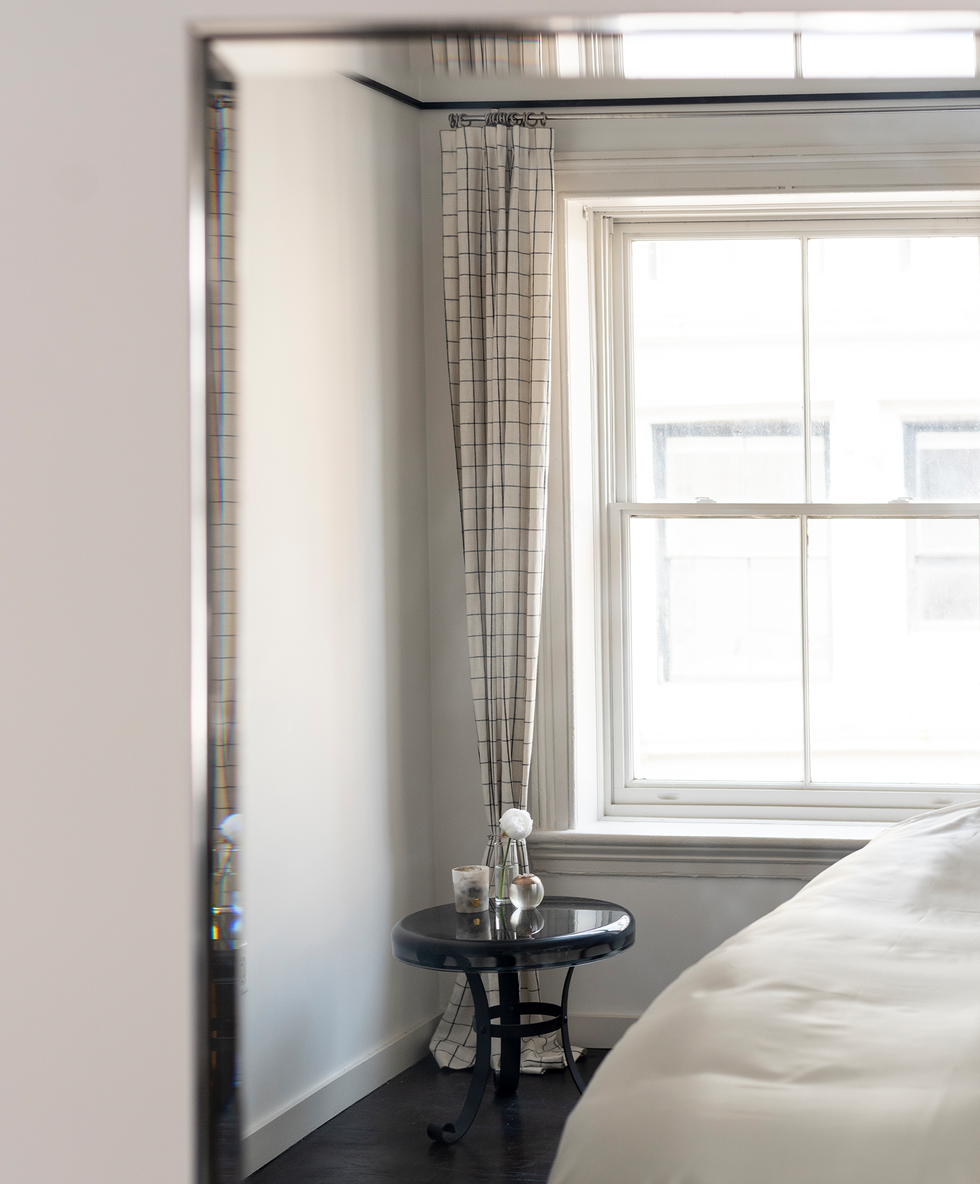
"It shouldn’t just be beautiful and pretty; it should be interesting and personal too,” she says. / Photo: Clare Perry
Courtney Wittich, a Los Angeles-based spa writer, muses that this is all by design. “If I [went into my] dream living room before I go get a massage, does that make me feel more at ease and ready for this experience?” she says. (The short answer: yes.)
Ultimately, we’re subconsciously seeking out third spaces for connection that are informed with intention and feel like an extension of our own dream homes. A cafe, coffee shop, or bar is not enough; we need fluffier buffers that foster a sense of community within a setting that isn’t overstimulating.
Modern fitness and wellness studios also seem to be embodying this ethos, and incorporating amenities like cold plunges and infrared saunas to really enhance the experience. When Sky Ting reopened its doors in Noho last year, founder Krissy Jones was looking for a fun, fresh start. She worked closely with the Bench Architecture team to bring her sporty chic version of a classic New York City loft to life with guidance from Courtney Applebaum; to channel the “barefoot at home, but elevated” feeling throughout the space, they installed a plush brown carpet that lays down a cozy foundation.
“From the moment you step through our doors, I wanted Sky Ting to feel like an extension of your living room—complete with art, carpet, and a thoughtful flow,” Jones says. “Our bathrooms are stocked with home-y products, and the showers feature the same nourishing lines you’d love in your own bathroom. Everything—front desk, couches, even lighting—was custom-designed in-house so the feng shui feels just right.”
Forget The Club—We're Going To The Spa
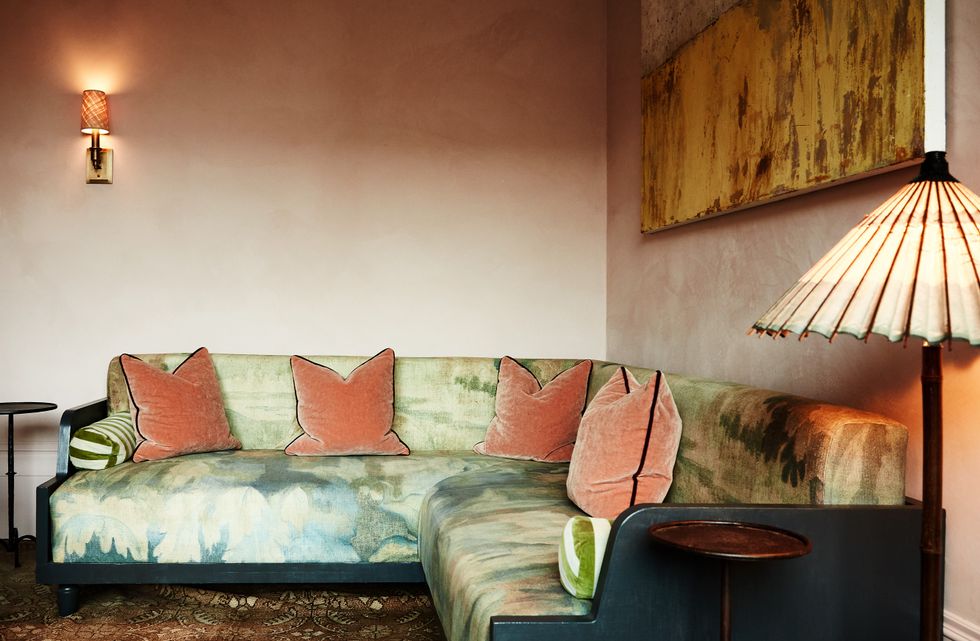
Photo: SIDIA.
Jones wanted to avoid following any fleeting design trends, favoring timeless materials and silhouettes that felt modern like polished steel and tempered glass bricks. “It’s thoughtful and warm without feeling over-designed,” she notes. “Pops of bold red make the space less serious, while the pattern of glass bricks, Japanese shōji screens, and steel shelving creates a cohesive grid motif that unites form and function.” Even the bathrooms, which feature custom hinoki-wood counters and walls backlit with Japanese paper, are meant to create an “unexpected, memorable experience." They’re also stocked with products from brand partners like Chanel, Osea, Costa Brazil, and Cinnamon Projects.
But the most drastic change was building out a sexy spa lounge in the back with poured high-gloss white floors and mirrored walls for restorative rituals (cupping, acupuncture, lymphatic massages, plunge pools, etc.), which can be accessed behind a secret mirror door with a glossy red lacquered frame inspired by the staircase at Alaïa’s Atelier in Paris. “Infrared saunas and cold plunges offer transformative benefits, and most people in NYC can’t install them in their apartments—they’re expensive and take up space,” Jones says. “By integrating these amenities at Sky Ting, we offer an accessible sanctuary alongside our classes.” While waiting for individual or group sessions to begin in the private rooms, visitors can relax on the sculptural lounge cushions that are modeled on the flat-profile couches in Michele Oka Doner’s iconic Miami apartment.
Erin Kleinberg, founder and CEO of SIDIA, thinks that this trend speaks to a cultural shift. “We’re collapsing the boundaries between wellness and living,” she explains. “Our homes are becoming sanctuaries, while spas are designed with a kind of personal, tactile intimacy. It’s a return to softness, to slow beauty… The cross-pollination feels both natural and necessary.” Brigette Romanek of Romanek Design Studio has also been noticing the blurring of these lines, especially within residential spaces. Now that we live in a world where health is wealth, optimization is no longer an afterthought—we’ve unlocked a new level of engaging our senses. “Wellness has become such an important part of how we exist,” Romanek says. “We all realize how important it is to feel good from head to toe and how you’re affected by your environment… Any chance we get to feel at ease, to not have to be on our Ps and Qs, or worried about something, is a really good thing.”
Meet Me In The Bathroom
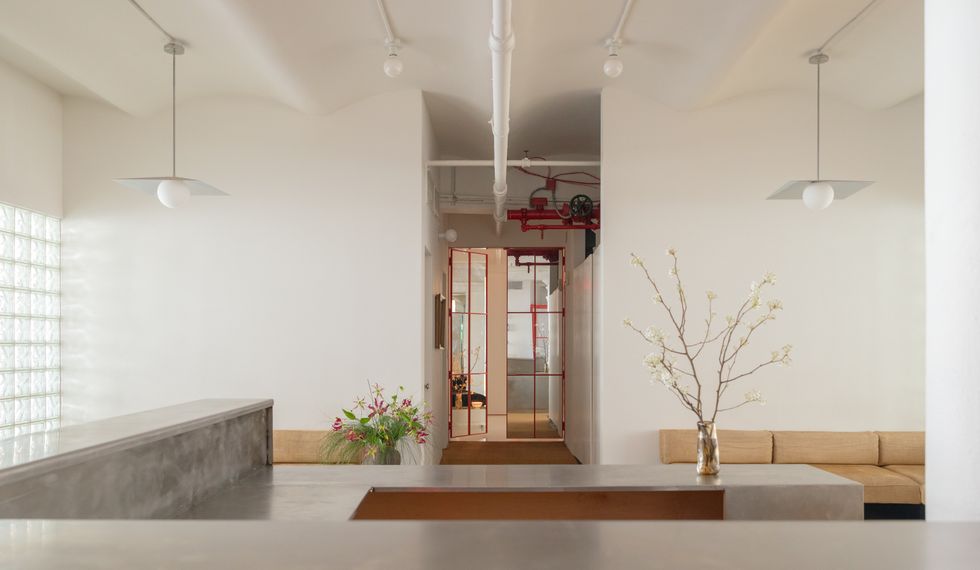
Krissy Jones, founder of Sky Ting, describes the vibe of the Noho location as a blend of “playful, sporty ’80s energy with the warmth and refinement of a lived-in home, and a whisper of classical art.” / Photo: Bench Venezia
Similar to a spa, when you walk into your home, you want to leave your problems at the door. In regards to creating a calm atmosphere for meditative moments, the bathroom is often the designated self-care zone. So, it should come as no surprise that spa-inspired bathrooms with luxury amenities are the new standard. Whenever I click through a celebrity home tour, I’m speeding ahead to the bathroom—I want Adwoa Aboah’s ball footed bathtub, Aurora James’s conservatory shower, and Justina Blakeney’s saloon door stall. (I’m even charmed by the controversial carpeted bathroom inside Lily Allen and David Harbour’s former abode.) Wittich is ready to move into Paloma Elsesser’s Milano-inspired marble bathroom. “Paloma, if you’re reading this, please let me come over and take a bath there,” she adds.
Wittich believes we’ve entered the “hotel-ification of bathrooms” era as public perception has drastically shifted from deeming the bathroom as a place “where dirty things happen” to an intimate space where “you get this quiet respite from the rest of the outside world.” As a result, there are different virtue signifiers for taste that are purely aesthetically driven, from Aesop soap and Nécessaire lotion to Tekla towels and Quiet Town shower curtains. The bathroom is where we spend the most time at home so why wouldn’t you customize it based on your wants and needs?
Depending on a person’s preferences, they might gravitate toward specific features like a bidet, a filtered showerhead, soft lighting, or a sink with a textured faucet. (While we’re here, can I interest you in a French rotating soap?) The bathroom is a deeply personal space that can leave a household divided—where some people want to establish firm boundaries, others might be eager to upgrade to a wet room.
As for dealbreakers, Romanek’s clients are most concerned about tubs and toilets. “Some [toilets] have really soft shapes so they’re not as intrusive in the bathroom or there is a sculptural element and then making the wall behind it super decorative,” she says. “I have clients who absolutely won’t do a marble tub because although it’s super beautiful, maybe it gets cold quickly, and then I have people who only want a marble tub. It really depends on the person and what’s important for them.”
Wittich also points out how Americans have a particularly strange sense of cleanliness, especially where hygiene and nudity are concerned, as demonstrated by the problematic “clean girl aesthetic” that went viral in 2022. Speaking on behalf of millennials, she insists that “our generation has different values, even in a bathroom.” Instead of settling for the default white porcelain toilets and bathtubs, she claims that we want functional fixtures that “look pretty more than we want it to be easy, convenient, and cheap” while also providing a sensorial experience.
When You Have The Spa At Home
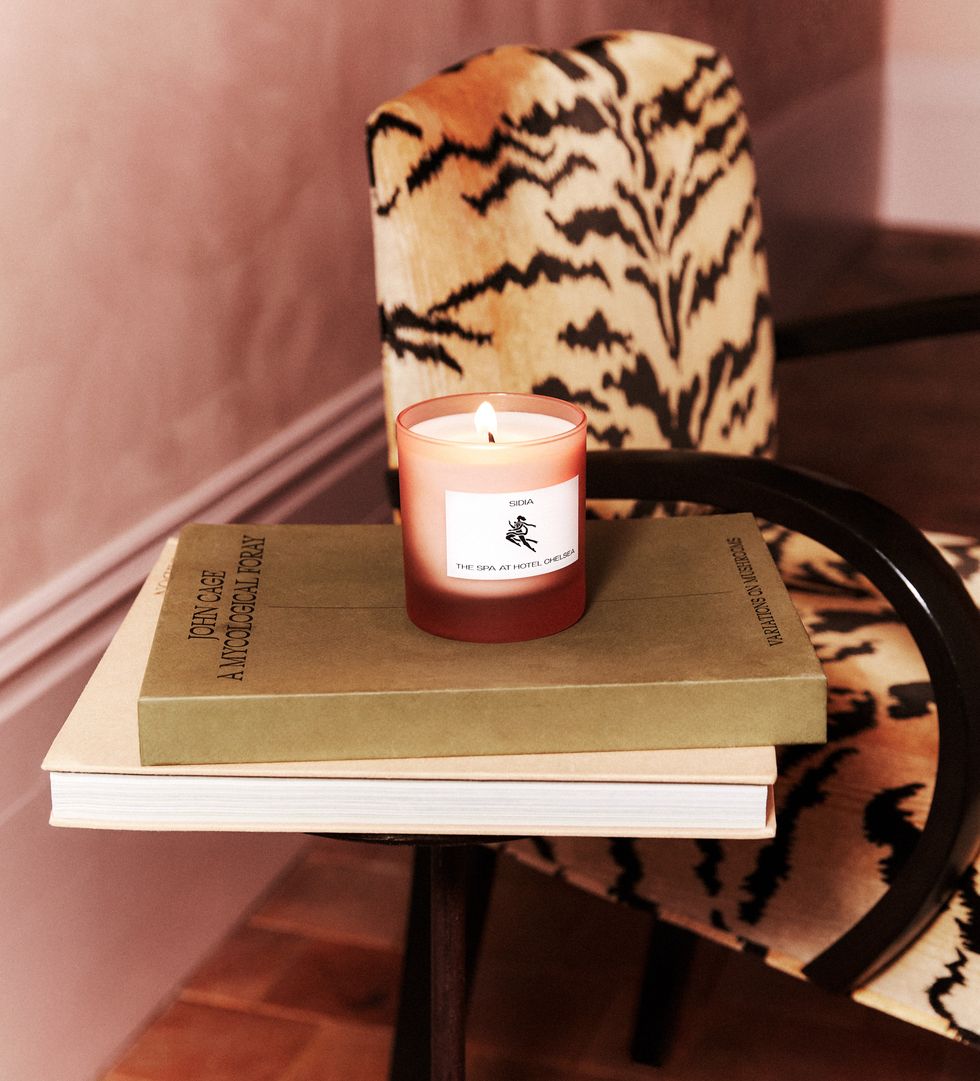
Photo: SIDIA
If a luxury spa treatment is seemingly out of reach for those with a more modest budget, splurging on spa-inspired candle might feel like a good compromise. This past April, SIDIA collaborated with Hotel Chelsea on the MUSE candle. Inspired by the iconic spa upstairs, the aroma transports you directly to the moody pink penthouse. “It’s truly like stepping into a jewel box in the sky,” Kleinberg explains. “It feels sacred, like a secret you want to keep but can’t help but share if that makes sense."
While we can’t all afford to build out a full functioning spa in our homes like Gwyneth Paltrow, there are certainly ways to loosely replicate the effect for the benefit of your personal environment and your well-being. Romanek refers to this as the “livable luxe” concept which is all about surrounding yourself with things that provide comfort but also serve an important function. “I have a free standing tub and tons of oils, I even like the shapes of some of the bottles,” she says. “It’s not like you have to do a complete reno, that just sounds stressful… It’s important to get back to yourself. You can do it at home or in a spa environment.”
For Wittich, tapping into an opulent mindset starts with a fairly simple question: “How can I add a little bit of joy to the shower?” Maximizing luxury comforts at home can look like a fancy soap, a chic bath mat, a luxury candle, a designer bathrobe, or a set of high quality towels. “My bathroom is my sanctuary, it’s where I can consciously choose to leave the device behind and totally disconnect,” she says. “I go to the bath when I feel good, when I feel bad, when I’m in a heartbreak, when I feel sick... It’s the place where I can just float and let things go.There’s a spiritual experience that I get in the water and in the bathroom.”
My Year Of Rest & Relaxation
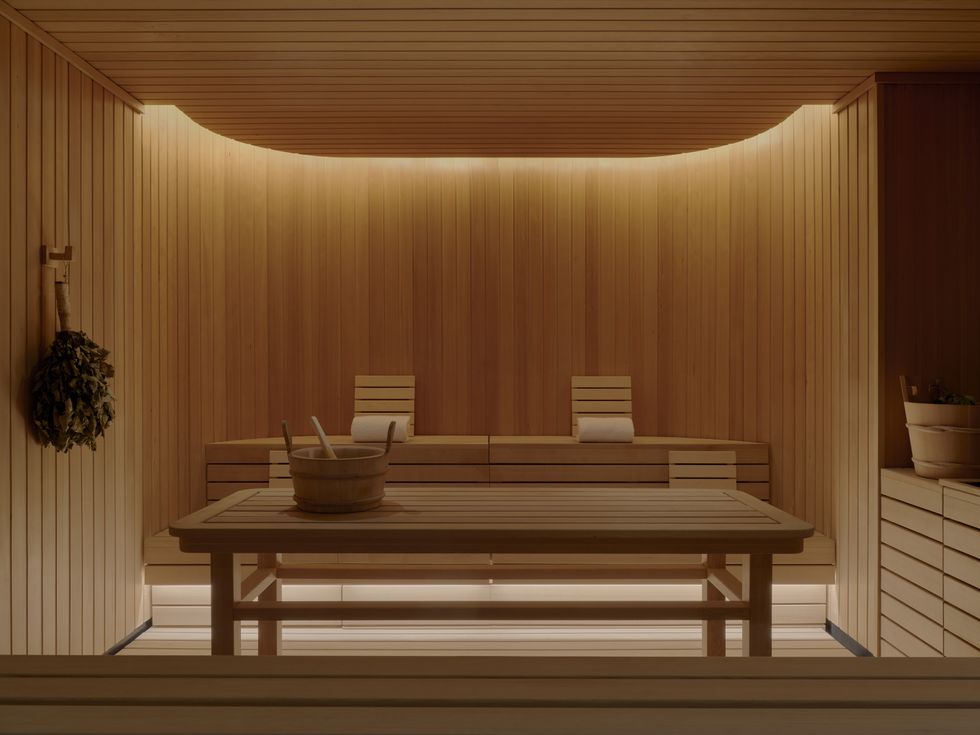
Photo: Aman Spa New York
For me, 2025 will be remembered as the year of getting wet: soaking, sweating, purging, detoxing. When I explored the spa house at Aman on a chilly morning in June, I found myself in complete solitude as I shed my layers between the wood-clad sauna (Banya) and marble steam room (Hammam). I even had the glamorous pool to myself which was extremely satisfying following a three-day heat wave streak. For the first time in weeks, I could exhale like I really meant it. I cried in the shower as I rinsed off because I had truly never been happier; no one else was there to hear me. I’m not sure when I’ll be able to return to Aman New York for another signature treatment, so leaving with a box of $50 incense from the gift shop was my reward. (The first time I smelled it burning while touring the facility a few months ago, I couldn’t stop thinking about the delicious aroma for the rest of the day.)
While there’s comfort in the familiarity of domesticity, I don’t want to be reminded of what awaits at home when I arrive at a wellness destination. Whether it’s a solitary or communal experience, I get more enjoyment from being fully immersed in immaculate interiors that transport me to another world where I can escape from my reality. When I’m having my chakras realigned or getting scrubbed down for a deep tissue massage, I would rather be surrounded by four sound-proof walls, not thin, sheer curtains dangling from a rail that barely captures the illusion of privacy. When the treatment ends, I want to leave feeling like my body really is a temple—that sense of serenity is something I can’t quite get at home, even when I drink a glass of “spa water” infused with cucumber and lemon.

